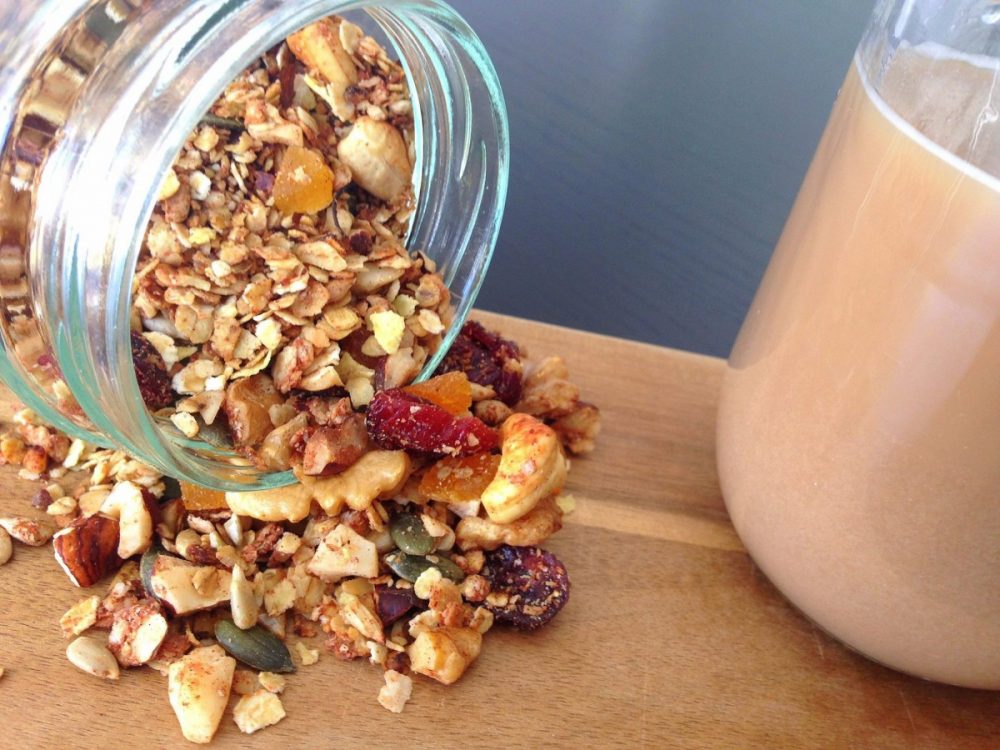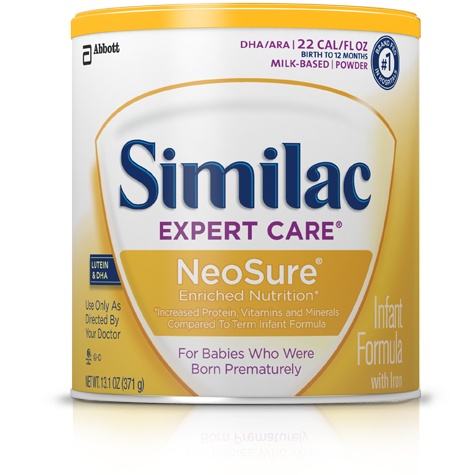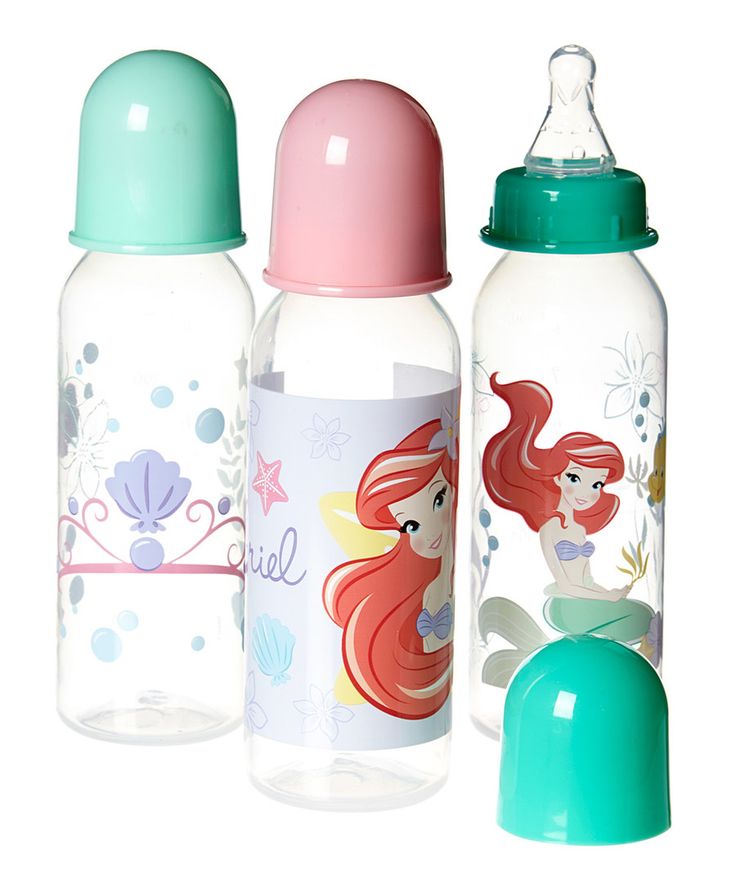Baby feeding bottle material
Baby Bottles and Bisphenol A (BPA)
Log in | Register
Ages & Stages
Ages & Stages
Many food and liquid containers, including baby bottles, are made of polycarbonate, or have a lining that contains the chemical bisphenol A (BPA). BPA is used to harden plastics, keep bacteria from contaminating foods, and prevent cans from rusting.
There are concerns, though, over the possible harmful effects BPA may have on humans, particularly on infants and children. Animal studies have shown effects on the endocrine functions in animals related to BPA exposure. Additional studies will determine what level of BPA exposure might cause similar effects in humans. As research continues, concerned parents can take the following precautionary measures to reduce babies’ exposure to BPA:
- Avoid clear plastic baby bottles or containers with the recycling number 7 and the letters “PC” imprinted on them.
Many contain BPA.
- Consider using certified or identified BPA-free plastic bottles.
- Use bottles made of opaque plastic. These bottles (made of polyethylene or polypropylene) do not contain BPA. You can also look for the recycle symbols with the number 2 or 5 in them.
- Glass bottles can be an alternative, but be aware of the risk of injury to you or your baby if the bottle is dropped or broken.
- Because heat may cause the release of BPA from plastic, consider the following:
- Do not boil polycarbonate bottles
- Do not heat polycarbonate bottles in the microwave
- Do not wash polycarbonate bottles in the dishwasher
Breastfeeding Breastfeeding is another way to reduce potential BPA exposure. The American Academy of Pediatrics recommends breastfeeding as the sole source of nutrition for your baby for about 6 months. When you add solid foods to your baby’s diet, continue breastfeeding until at least 12 months.
If you are considering switching from canned liquid to powdered formula, note that the mixing procedures may differ, so pay special attention when preparing formula from powder.
If your baby is on specialized formula to address a medical condition, you should not switch to another formula, as the known risks would outweigh any potential risks posed by BPA.
Risks associated with giving infants inappropriate (home-made condensed milk) formulas or alternative (soy or goat) milk are far greater than the potential effects of BPA.
The information contained on this Web site should not be used as a substitute for the medical care and advice of your pediatrician. There may be variations in treatment that your pediatrician may recommend based on individual facts and circumstances.
How To Choose The Right Baby Bottle
Home > Newborn > Feeding & Nutrition, Product Guides, Feeding & Nutrition > The Best Plastic-Free Bottles For Babies
Trying to figure out how to choose a more sustainable and non-toxic baby bottle? In this guide, we go over the pros and cons of plastic, glass, silicone and stainless steel baby bottles as well as what you need to consider when choosing nipples, shape and size!
When it comes to choosing a baby bottle, parents often find themselves asking questions like:
Should I choose a plastic, glass, stainless steel or silicone baby bottle? Do I want latex, silicone or natural rubber nipples? How many do I need?
Navigating the complex world of baby bottles can make labor seem like a walk in the park (hahaha… just kidding).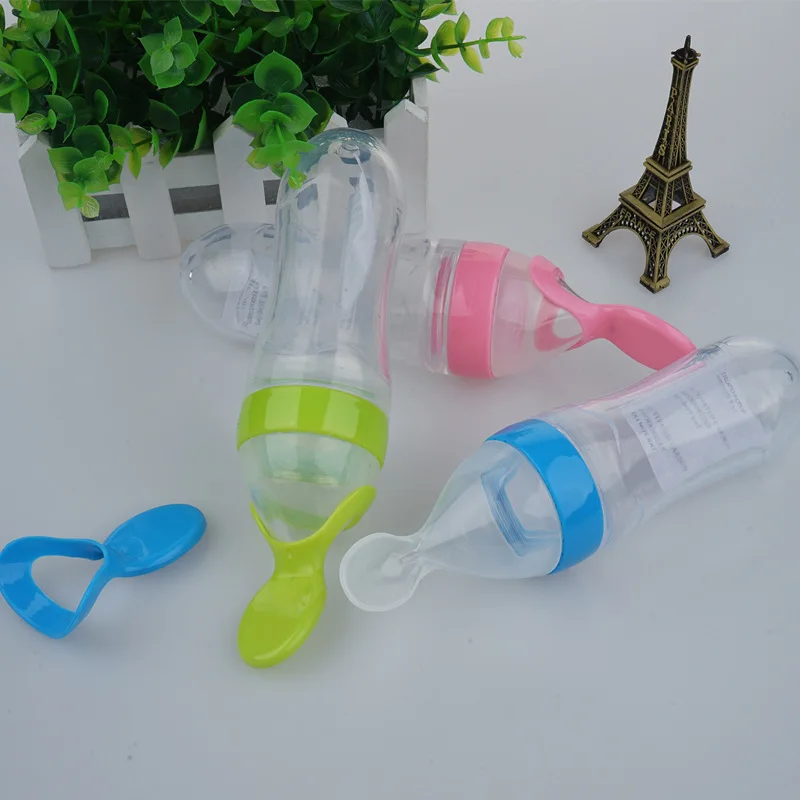
Don’t worry! In this non-toxic baby bottle guide, we’ll go over:
- Baby bottle materials and how safe they are for your baby
- Baby bottle shapes, sizes and other options to consider
- The different types of baby bottle nipples
- Our favorite non-toxic baby bottles
- The accessories you’ll need to make bottle feeding easy
Scroll down to learn more!
Baby bottles come in four materials – plastic, glass, silicone and stainless steel – that each have pros and cons.
Plastic Baby Bottles
Plastic is the most common material for baby bottles. It’s lightweight, shatterproof and inexpensive, but it’s not the safest option. Although the Food and Drug Administration banned the endocrine-disrupting chemical bisphenol A (BPA) from baby bottles in 2012, equally damaging chemicals such as phthalates and bisphenol S (BPS) can still be present in them. Endocrine disruptors have been shown to cause a range of health issues from birth defects and infertility to diabetes and cancer.
Avoiding microplastics and chemicals in plastic baby bottles
At The Tot, we never use or recommend anything that hasn’t passed The Tot Test. This means we’ve looked deep into third-party testing, examined ingredients lists and asked in-depth questions about a product’s composition to ensure it doesn’t contain any of the chemicals we caution.
When it comes to baby bottles, we’re particularly fussy because they’re a product intended to be heated, which makes them more likely to leach microplastics, which are tiny particles of plastic that flake away as plastic degrades, and other potentially harmful chemicals into our baby’s breastmilk or formula.
According to reporting done by NPR, “A new study in the journal, Nature Food, suggests that bottle-fed infants around the world may be consuming more than 1.5 million particles of microplastics per day on average.”
While this figuring is confronting, not enough research has been done to show the true risk of ingesting microplastics. As parents who like to err on the side of caution when it comes to what goes onto and in our bodies, we try to avoid plastic, especially for food preparation, when possible.
As parents who like to err on the side of caution when it comes to what goes onto and in our bodies, we try to avoid plastic, especially for food preparation, when possible.
If you do opt for a plastic baby bottle, ensure that it is free of:
- BPA + BPS
- Phthalates
- PVC
Glass Baby Bottles
Glass bottles won’t leach toxic chemicals into your baby’s milk and they last longer than plastic, but they’re more expensive, heavier and may be prone to shattering (depending on the brand). The good news: you can buy silicone sleeves that slip over the bottles to help prevent breakage.
Silicone Baby Bottles
Silicone bottles can be hard to find and pricey, but they’re light, unbreakable and toxin-free. While silicone MIGHT leach chemicals when exposed to very high temperatures, they don’t seem to with regular use. Our advice: choose bottles made from food-grade or medical-grade silicone.
Stainless Steel Baby Bottles
Stainless Steel bottles are free from toxins, shatterproof, light and long-lasting. The only downside is that they can be expensive.
The only downside is that they can be expensive.
Once you’ve decided on the material, there a few other options to consider:
- Disposable inserts: Some plastic bottles can be used with disposable sterilized liners that are thrown away after each feeding. They’re convenient because they cut down on cleaning time, but they’re expensive and bad for the environment.
- Bottle shape: Baby bottles come in a variety of shapes that have different advantages. Standard bottles are straight-necked and fit into most bottle warmers and cupholders. Angled bottles have a curved neck that reduces the amount of air your baby swallows. Wide-neck bottles have wider nipples that mimic human ones and can help reduce nipple confusion in breastfed babies.
- Venting: Different types of venting systems help minimize air bubbles that can cause painful gas. If your baby seems fidgety or cries after feeding, a vented bottle may help.
- Size: Small bottles hold 4 or 5 ounces, while large bottles can hold between 8 and 10 ounces.
 Start with small bottles and switch to bigger ones around four months or whenever your baby’s appetite increases.
Start with small bottles and switch to bigger ones around four months or whenever your baby’s appetite increases.
You’re not finished making decisions just yet! Here are your options when it comes to nipples:
- Material: Latex nipples are inexpensive and more flexible than silicone, but they’re not as durable, they may leach carcinogens called nitrosamines and some babies are allergic to latex. While the firmer silicone nipples aren’t as popular with the little ones, they last a lot longer and they’re toxin-free (make sure you choose food-grade or medical-grade silicone). Natural rubber nipples are also free from harmful chemicals, and they’re softer and more resistant to bites than silicone.
- Shape: Traditional nipples are long and skinny. Wide nipples mimic the shape of a breast and may be more easily accepted by breastfed babies. Orthodontic nipples fit the shape of your baby’s palate and gums, promoting heathy oral development and digestion.

- Flow: Nipples come in three flow speeds: slow (stage 1), medium (stage 2) and fast (stage 3). Preemies and newborns will start with the slow flow and move up to faster flows at their own rate. The suggested age ranges are just general guidelines, so move up a size when your baby seems to be struggling to get milk out of the bottle. If your baby chokes or splutters, the flow is too fast and you should go back down a size.
All Tot Tested and approved, here are our favorite non-toxic baby bottles.
Natursutten Glass Baby Bottles
With their borosilicate glass construction and all-natural rubber nipples, Natursutten bottles are free of BPA, PVC, phthalates and chemical softeners.
Natursutten Glass Baby Bottles – 2 pack
$30 – $34
Available in 4 oz and 8 oz
BUY NOW
Olababy Silicone Bottles
Olababy’s Gentle Bottle is made from medical-grade silicone, 100% toxin-free and sustainably produced.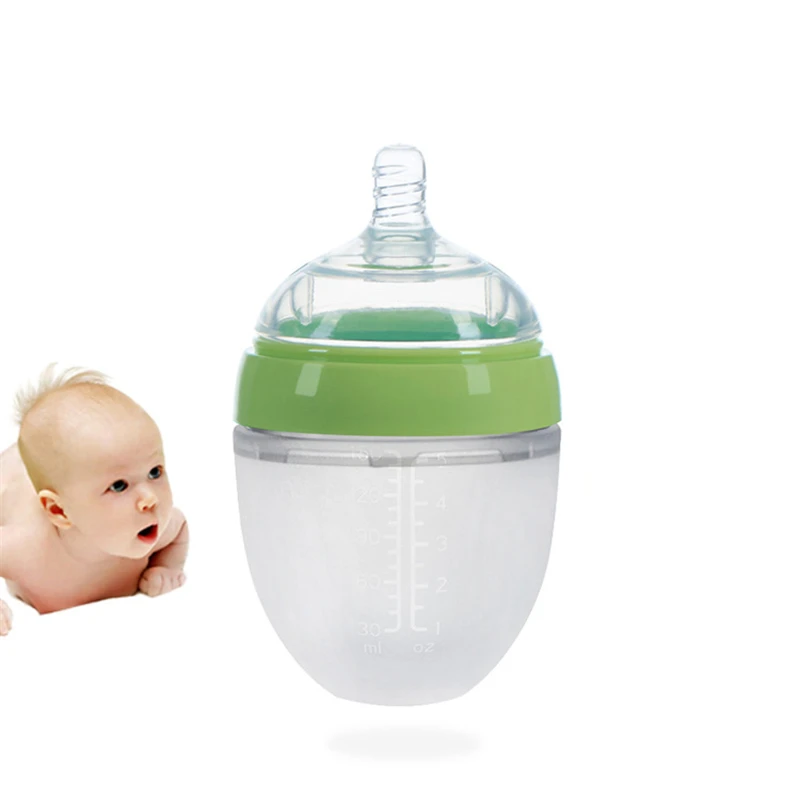
Olababy Silicone Bottles
$28.95
Available in more colors
Available in 4 oz and 8 oz
BUY NOW
Olababy Bottle Transitional Set
$39.95
Available in more colors
BUY NOW
Comotomo Silicone Bottles
These medical-grade silicone bottles feature a wide-neck design, dual anti-colic valves and a natural, skin-like feel.
Comotomo Natural Feel Baby Bottles (5 oz) – 2 pack
$22.99
Available in more colors
BUY NOW
Comotomo Natural Feel Baby Bottles (8 oz) – 2 Pack
$23.99
Available in more colors
BUY NOW
While you may have your bottle game sorted, don’t forget about cleaning.
We find it really helpful to have an easy to clean drying rack as well as a steam-free UV sterilizer.
Wabi Touch Control Dual Function UV Sterilizer & Dryer
If you’re looking for a steam-free sterilizer, the UV Wabi is for you! We also love it because it has a drying function!
Wabi Touch Control Dual Function UV Sterilizer & Dryer
$289.99
BUY NOW
Continue exploring
- Find out How to safely clean baby bottles and How to wean your toddler from a bottle.
- What We’re Reading: These Are The Toxic Materials You Should Avoid In Everyday Products
10 joys to choose a dance for the birthday
Preparing before the appearance of the baby, young fathers make a lot of different speeches and subjects that are necessary for the future child. The list of purchases will show up and a dance for the anniversary. Vaughn is necessary for all the little ones without blame. The counters of the shops literally break in the abundance of little dances for the anniversary and the fathers, especially those who appreciate the first place, can be important to look at such a rose at once.
The counters of the shops literally break in the abundance of little dances for the anniversary and the fathers, especially those who appreciate the first place, can be important to look at such a rose at once.
We will try our best to make your choice easier :)
If you are planning to have a baby, you will need a baby doll up to 6-9 months. For every child, before the diet of a child, water, juices, and raw cereals are introduced - and you can’t do without a platter here. Choice of dances for anniversaries - on the right, it is right. Adzhe incorrectly picked up the nipple, that little dance can stick on the self-feeling that scorching camp of the little one.
1. Volume
Everything is simple here.
Small puffs (100ml, 125ml, 150ml) for newborns. Large (200 ml and more) - for older children. nine0003
Often labeled on the package 0+, 3+, 12+ - a bottle of water/juice for older children;

2. Material
At the moment, children's dances are vibrating in the glass, plastic and medical silicone:
- Sklo is the most ecological material. Plyashechki zі skla dovgovіchnі, kindly pіddayutsya kip'yatіnnyu, ecologіchnі. Do not kalamutn_yut, do not accumulate odors. Golovne - do not throw on the pidlog. Minuses - important for children's hands, they break. nine0020
- Plastic is the most practical material. Plyashechki made of plastic are light, sturdily, do not wear out, are of little importance, and are easy to move. Minuses - with frequent use, micro cracks can form in the middle, calamity when boiled, absorb odors, not durable.
- Medicinal silicone - such little balls are not particularly popular in our area, they may be eligible for this article. Such little plyashechki do not make a zhorstkoї form. The stench of the ecological ones is boiling. Mabut, on tsomu іz plusіv moustache.
 nine0020
nine0020
3. Shape
Today's technology and flexibility of materials (plastic for this type of shape) can allow weavers to make puffs of various shapes. Let's look at the most popular:
- Classic straight - victorious and turned over by mothers of the whole world even richer rock.
- Straight out of the hands – handy for handling with childish hands.
- Wide shape to follow the shape of the breasts. nine0020
- Plyashechka in the shape of a ring - so called "anti-colic". The name speaks for itself. From the minus - the best at a glance cleaning and sterilization.
Depending on what shape you will get - the main parameter in this way is the stability and simplicity in mitt and sterilization of the plaque. Pay the whole hour to your choice.
4. Pacifier
Which item should be given special consideration. With optimally adjusted social system, a child develops a correct bite, as well as correct smack sounds. As a rule, the nipple is included in the kit with a pad behind the eyelid (0+, 3+, 12+). nine0003
As a rule, the nipple is included in the kit with a pad behind the eyelid (0+, 3+, 12+). nine0003
Teats can be made in two types of materials:
- Latex - bottom and soft. ALE! Nedovgovіchnі, smother the smell, chіplyаyat brood and mіnyati more often, lower silicone.
- Silicone - durable, resistant to boiling, color and odor resistant. ALE! Silicone is easy to grow and can damage during teething. This is recommended for children until the first teeth appear.
And now 10 practical ways to choose a platter:
- Buy puffins exclusively from specialized stores and pharmacies. Wonder how the comrades are in order on the police. Bіlya plyashechok is not guilty of but butovoї chemistry and other improper state.
- Pick the houses of the pickers. The famous brandy should not save on the quality of materials! In addition, they invest pennies in new developments, tests, marketing research.
 Such a product on a regular basis to undergo certification and standardization - all the same - the guarantee of your products, and also - the safety of your child. nine0020
Such a product on a regular basis to undergo certification and standardization - all the same - the guarantee of your products, and also - the safety of your child. nine0020 - Assess ergonomics. The plyashechka is guilty of being handy, placed in the hands of a child, a sterilizer, a thermos, etc.
- Marking with the name of the company-maker can be not only on the packaging, but also on the dance itself. In deyakih vipadkah - put on the nipple.
- The nipple for the baby puppet is due to the age and appetite of the little one.
When choosing a ball from the store - do not hesitate. Expensive branded plyashechki are prepared from the heat-fired warehouse, as if it were not lusne for the hour of boiling. nine0003
- Obov'yazkovo revіryaet the term of applicability. Latex at the wrong temperature may crack.
- With active use of the pad - the nipple will change to change.
- Puffs of famous brands cannot be cheap. If the price is suspected to be low, it is possible that you are being asked to sell a letter.

- Buy an additional trim for a vibrated plate. If the hour comes to study independently, this accessory is meaningful to forgive the child's task. nine0020
Hopefully, there will be enough material provided, so that you can easily pick up the right one for your little darling. We hope you have a lot of names with a little baby and animals, in such a little ball with a pacifier will become indispensable helpers :)
Glass or plastic: which feeding bottle to choose
Glass or plastic? Which baby feeding bottle to choose for a newborn? What are the advantages and disadvantages of each material? Is there an alternative to glass and plastic in the world of baby feeding bottles? Let's talk briefly about the main thing with examples and at the same time talk about bisphenol-A. nine0120
Baby feeding bottles - an incredible variety of options. Between themselves, the bottles differ in shape, design and material. What a baby bottle is made of is a really important question that worries caring parents. Which one is safer for the health of the baby, and which one is more convenient to use?
Which one is safer for the health of the baby, and which one is more convenient to use?
With all the variety of baby bottles, glass or plastic bottles are the most popular. These materials have obvious differences, but, we note right away that glass and plastic are equally good and are great for making baby bottles. So much so that in the collections of leading brands there are separate series of both glass feeding bottles and plastic ones. nine0003
The choice of glass or plastic depends largely on your preference and the conditions of use. Will you sterilize and heat the bottle in the microwave? Do you plan to wash in the dishwasher? Take a bottle with you to the street?
Plastic feeding bottles
Plastic baby bottles are safe for babies. Modern plastic material (polypropylene) does not contain harmful compounds. The main advantage of plastic baby feeding bottles is their lightness and durability. nine0003
- Advantages: can be sterilized, doused with boiling water, inexpensive price, the child will be able to hold on their own.

- Disadvantages: scratches quickly, may fade.
Plastic feeding bottles suitable for indoor and outdoor use. Some of them can be used in the microwave, but in the dishwasher - it is not recommended. Unlike glass, plastic tarnishes over time, and if the plastic bottle is scratched, it should be replaced. nine0003
How to understand the marking? Designations on plastic feeding bottles:
- PP (polypropylene) is a particularly strong and transparent material. PP labeled feeding bottles are BPA-free and are even suitable for freezing. The surface of the polypropylene bottles is smooth and pleasant to the touch
- PA (polyamide) is a transparent synthetic material. This type of plastic is characterized by high chemical resistance, which means that it almost does not become cloudy and does not change color. BPA-free, impact-resistant polyamide baby bottles are easy to care for, but it's best not to put them in the microwave.
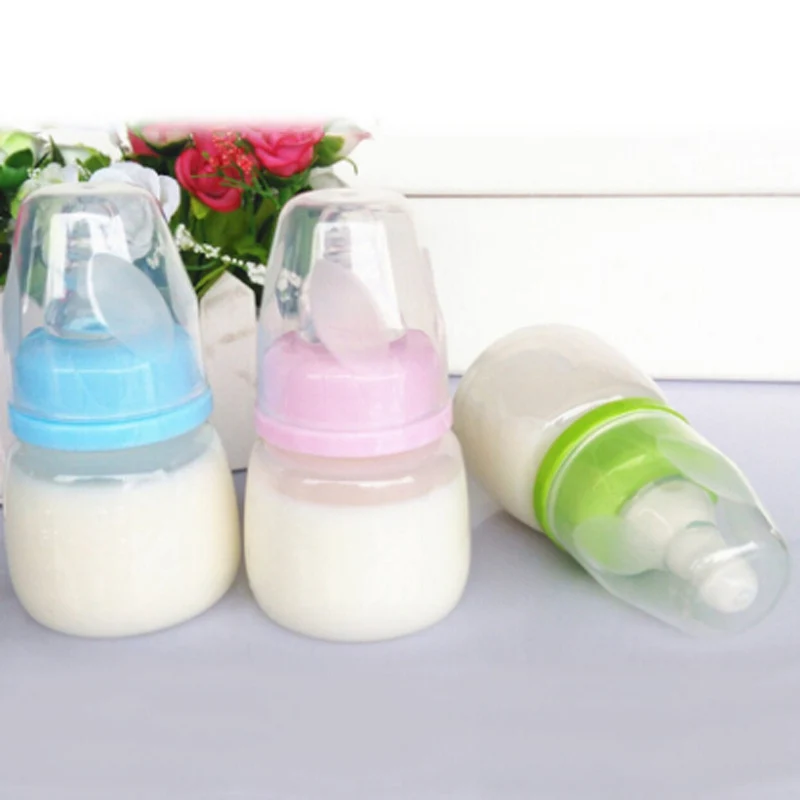 In appearance, plastic PA bottles resemble glass bottles. nine0020
In appearance, plastic PA bottles resemble glass bottles. nine0020 - PPSU (polyvenyl sulfone) is a heat resistant synthetic material. Baby bottles labeled PPSU have a slight yellowish tinge. But they are resistant to scratches, they can be steam sterilized, used in the microwave.
Suavinex polypropylene feeding bottles are safe and very comfortable for babies. The incredibly cute design of Spanish bottles delights even adults.
Suavinex launches whole thematic collections, bottles of different sizes, wide neck, anti-colic, for boys and girls. nine0003
Plastic baby bottles are also available from Chicco, Philips Avent, Lovi, Dr. Brown's.
Glass feeding bottles
Glass feeding bottles are durable. Eco-friendly material is also safe for children's health. Glass bottles are the most transparent and keep the temperature of food longer, and of the minuses - weight and fragility. Fire-resistant glass does not crack, so the bottles can be washed and boiled as much as necessary. nine0003
nine0003
Glass bottles are most often used for feeding the smallest babies when the bottle is held by the parents.
- Advantages: easy to clean, can be boiled, retains the temperature of the contents for a long time, retains transparency, does not stain from tea or juice.
- Disadvantages: may break if dropped, heavier than plastic, more expensive.
Chicco glass baby bottle for newborns. Suavinex is ready to offer a beautiful glass bottle with a wide neck and a silicone case, while the mixture can be prepared directly in it. nine0003
Everyday Baby produces the brightest glass bottles. The company manufactures baby bottles from premium quality borosilicate glass with a heat-sensitive silicone coating on top. If the content of the baby bottle is too hot, it will change color.
Silicone feeding bottles
Until recently, parents' choice was limited to glass or plastic baby bottles. Now there is an alternative to these materials - silicone. Lightweight, unbreakable, comfortable, and toxin-free, silicone bottles are more expensive than glass or plastic bottles. nine0003
Lightweight, unbreakable, comfortable, and toxin-free, silicone bottles are more expensive than glass or plastic bottles. nine0003
The Olababy GentleBottle is a silicone feeding bottle that can grow with your baby into a drinking cup.
What is Bisphenol-A
Bisphenol-A (abbreviated as BPA ) is a substance found in polycarbonate (PC). In everyday life, we are constantly in contact with it: plastic bags, food packaging, mobile phones, sunglasses, nail polish.
But not in baby bottles. In the early 2000s, bisphenol-A was critically acclaimed, and manufacturers started producing BPA-free feeding bottles. Since 2011, the EU countries have banned the production and sale of children's products containing bisphenol-A.
Feeding bottles with the “Baby Package” card
With the “Baby Pack” card, you can buy glass, plastic, silicone feeding bottles and everything you need for your baby online at the children's online store karapuzov.


